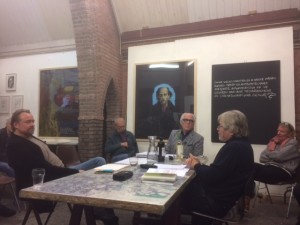While cleaning up my overloaded bookshelves I retrieved some magazines and checked them for articles worth keeping. One of these was an issue of Archis, the architectural magazine that has devoted many articles to the – at that time already – increasing developments in virtuality. In 1997 the symposium Transarchitectures 02 took place in Paris, accompanied by an exhibition curated by Paul Virilio. An interview (originally in Archicree, 279) with him was published in Archis, issue 1998/11 in which Virilio stated: “The problem is that the architect is back to working with two types of space. He has to build real space and allow immediate – meaning active – space, and virtual – meaning latent or potentially present – space to co-exist.”
Now, almost 20 years further, we may come to the conclusion that ’the problem’ still exists; only a few very architects succeed in really ‘ mixing’ both types of space. Worth reading in this is also the book by Ole Bouman: ‘ Real time in quick space’ ; also as series of essays, still actual. (NAI-Publishers, 1996)

